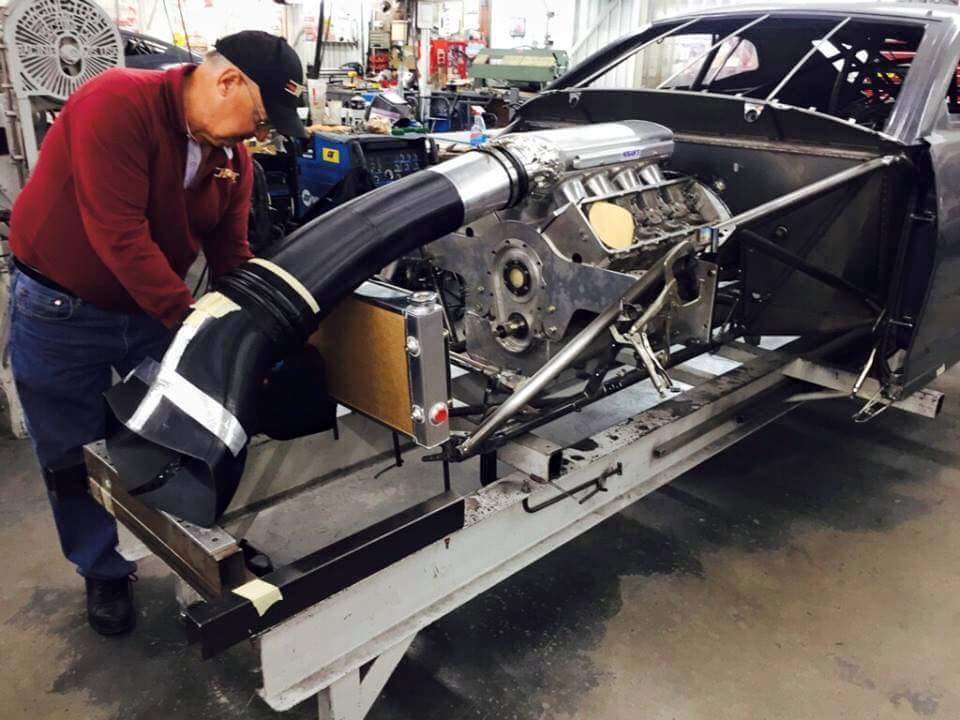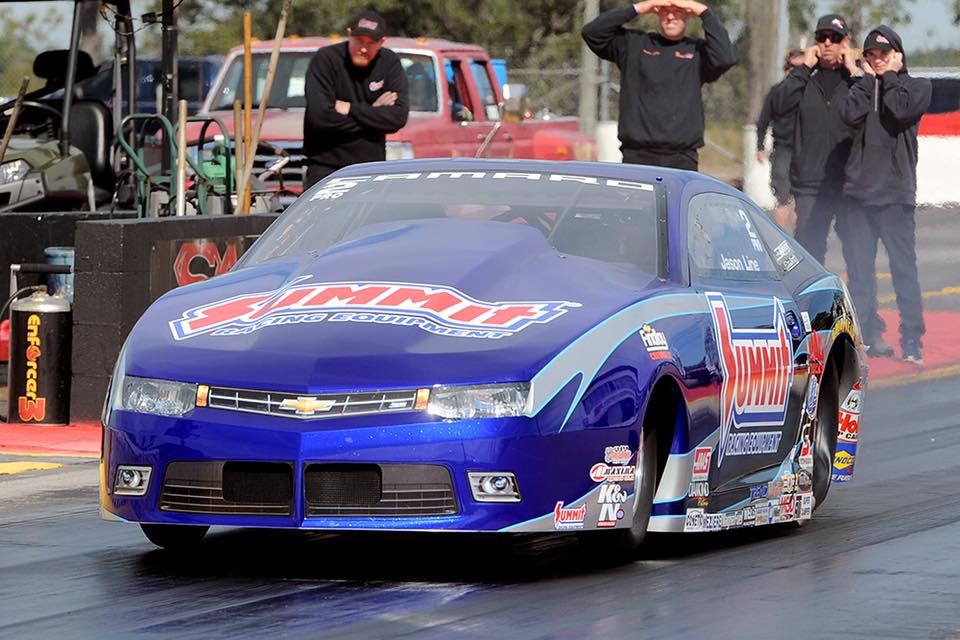Several NHRA Pro Stock teams started testing Monday in Bradenton, Florida. The new mandatory EFI systems bring many new challenges, but also a new look. Changes include amongst others: electronically-controlled throttle body fuel injection systems with a rev limit of just 10,500.
The goal of the rule change was to make the engines more relevant from a technological point of view, but also to make the vehicles look more like street cars, more recognizable. Hence, the hood scoops are a thing of the past in this category.
What I’ve learned from running several mountain motor pro stock cars is that carburetors are much easier to tune. Every so often only minute changes were needed, depending on air density, etc. EFI on the other hand is much more a tuner’s game, for you must program it do what you want it to do through all the facets of a run, from idle to burnout to “fultrot” down the track. Welcome to the 21st century boys!
The Summit Team ran a best of 6.57 at 210.47 mph. When it was Allen Johnson‘s turn, he laid down a 6.564 at 209.99 for the Mopar boys. As was to be expected, both runs were considerably slower than times set with the old cars. If I’m not mistaken, the best et at Bradenton was a 6.466 at 212 mph.

For several cars the new rule changes mean shorter radiators in order to make room for the ducting, and the fuel-cell strut-bar mount will have to be adjusted. In all, the conversion should take some 50 man hours, according to Jerry Haas Race Cars.

Though I am sad to see the iconic hood scoop go, I am excited that the factory hot rods have finally entered the electronic-fuel-injection era. This means a level playing field for everyone as the changes require new engine research and development program, along with major changes to the car body due to the air-duct system. What’s also new is that instead of using old wrenches and screwdrivers to tune the engine, now laptops and software will have to accomplish this, and with it the corresponding changes to the clutch system, transmission, rear-end gears, and suspension in order to adapt to the new power curve of the engine. Can’t wait till Pomona!
Source: Drag Illustrated
Photo credit: Competition Plus
